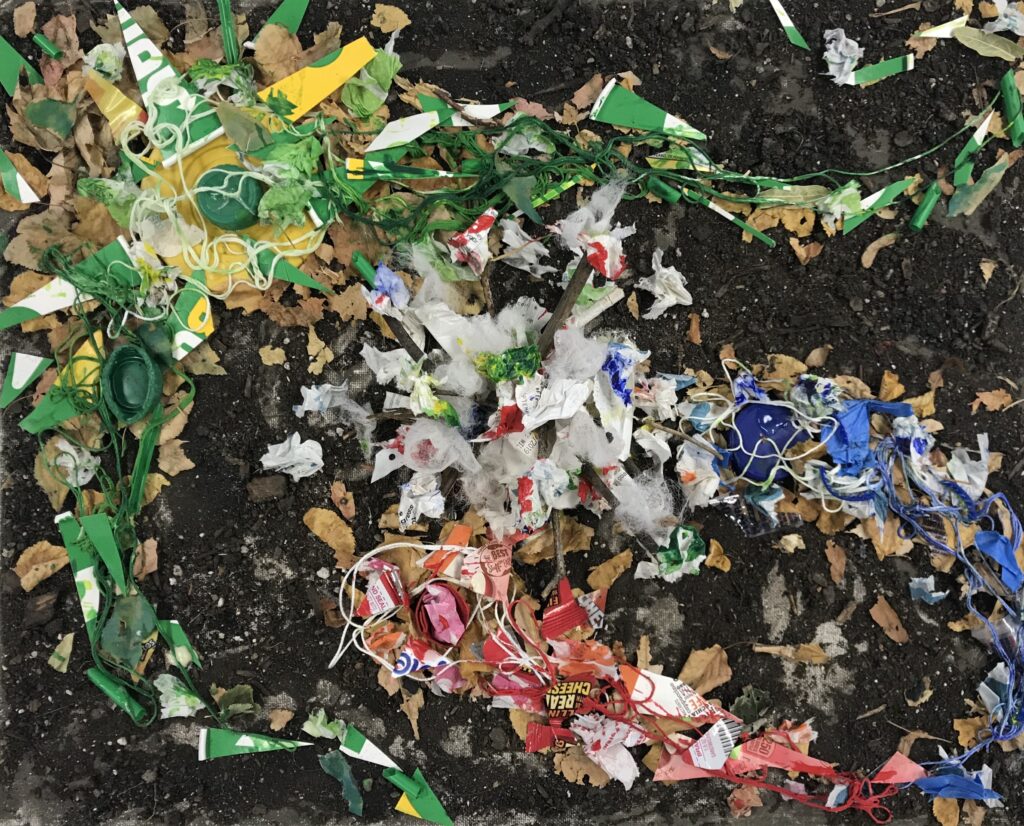
This small portfolio is inspired by an interest in trash production in modern society. Likewise, I am oftentimes inspired by found objects or materials that are unconventional media for art.
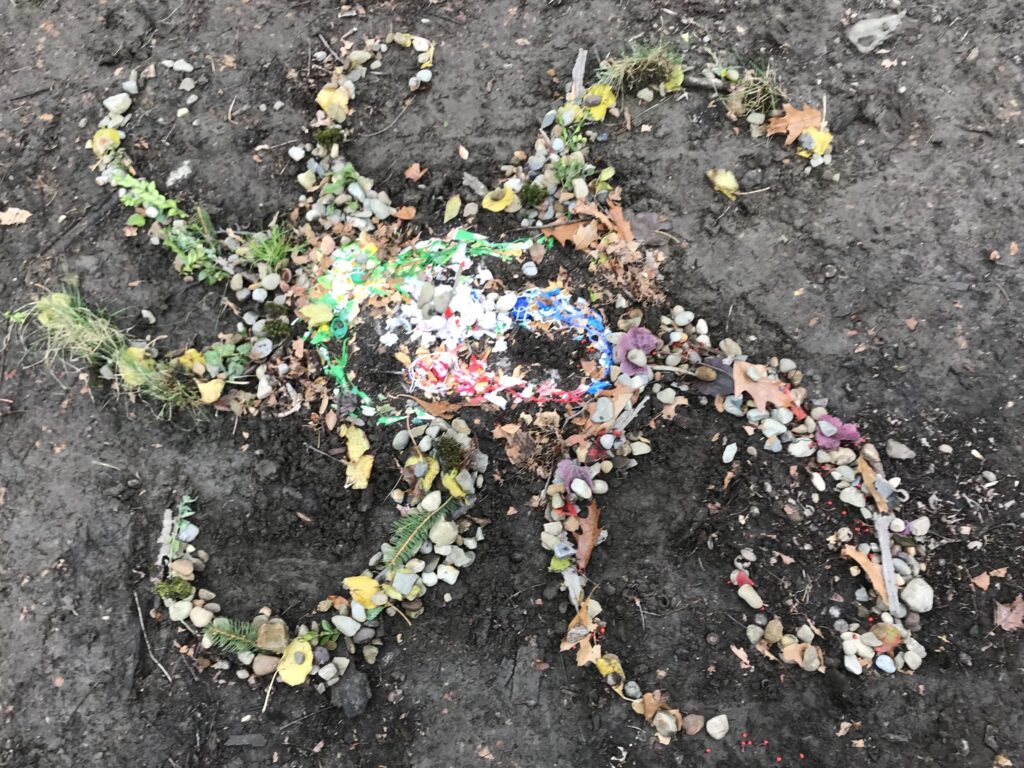
These first two projects are interconnected and the second piece contains the first. This piece was created by collecting trash in downtown Cleveland. The downtown area is oftentimes seen as a dirty and gross place and the goal of using trash as a medium was to highlight the idea that there can be beauty in things that are not seen as beautiful. I am by no means suggesting that trash is good or wanted. However, I am trying to question what it means for something to have value. In this case I tried to turn something valueless in to something desirable and aesthetic. I think considered the relationship between where I found this trash and the trash itself. This led me to juxtapose a world waste with a world of resources i.e. trash and the environment. I placed the trash piece in a piece of land and then collected various colorful leaves, grass, rocks etc. just like I had done for the trash. I expanded on this piece in an outdoor installation documented here as a dichotomy of nature and waste. A desired and undesired mixed together as is much of the environments we find ourselves in.
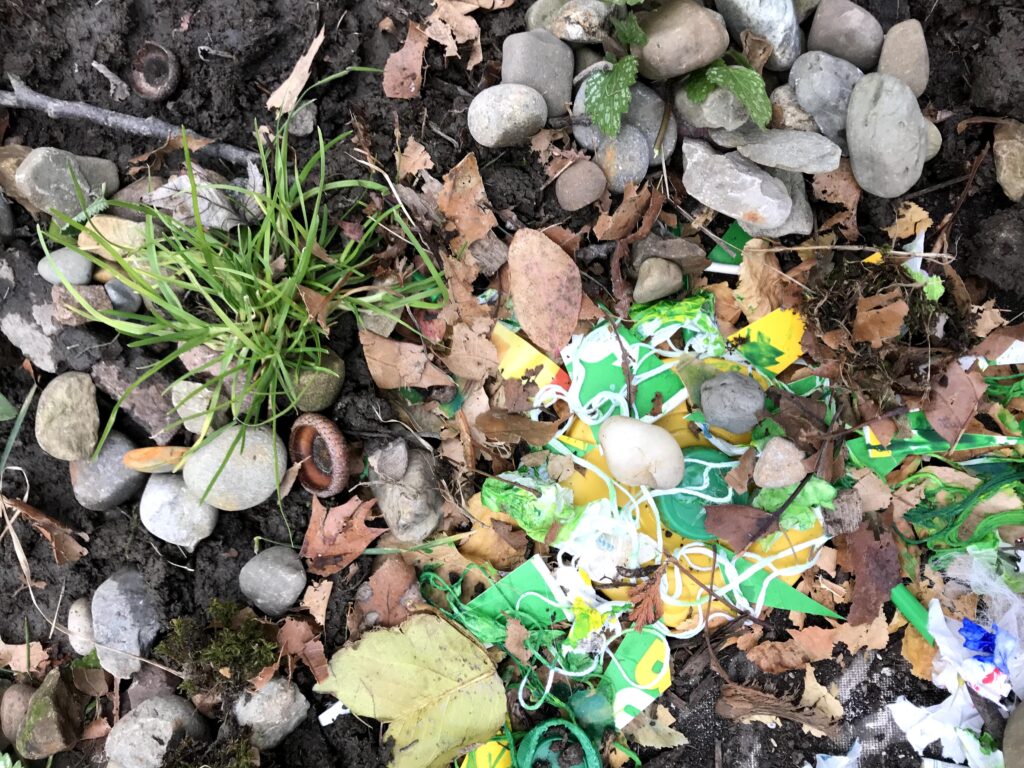

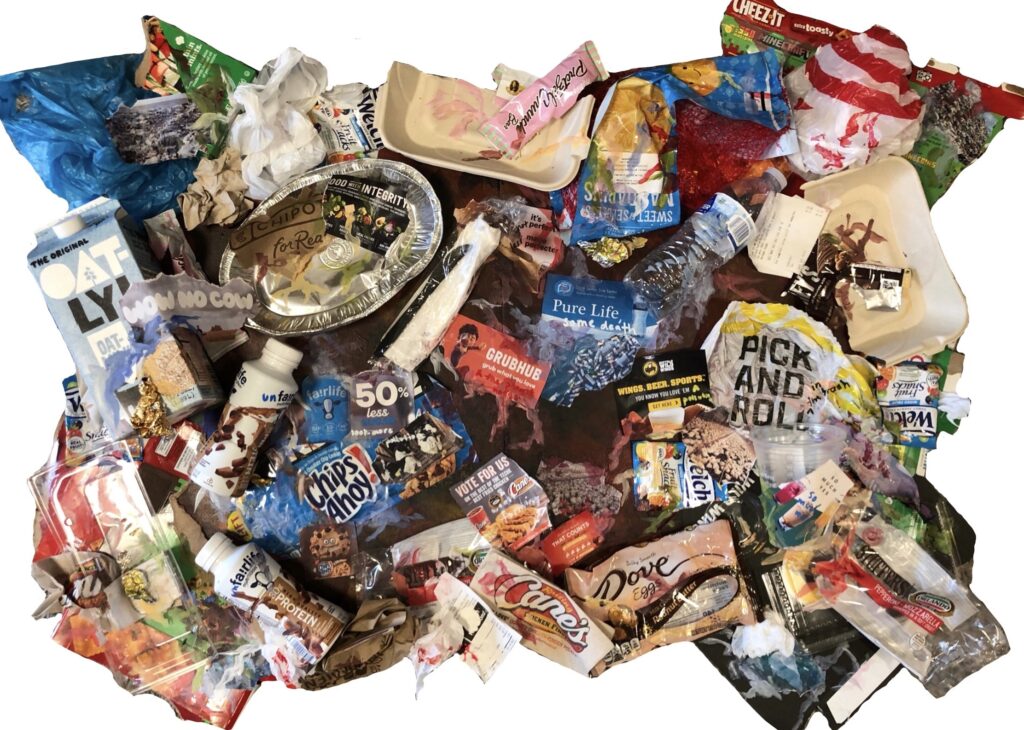
For this trash piece, I collected much of the food waste trash I used over the course of a couple weeks. The project was the result of a research project involving food waste in the US, particularly regarding the ‘fast food’ culture we have in the states. Fast food in this regard is not just referring to a place like McDonalds, but more so the regard of food as a casual humanmade treat as opposed to a commonplace for family, a resource taken from the earth, and a fuel for our bodies. This piece includes a collage of the trash I collected alongside advertisements for this food that encourages the fast food culture many of us succumb to. I have written over some of these advertisements to essentially call out the way in which they captivate us and put convenience and pleasure above all else.
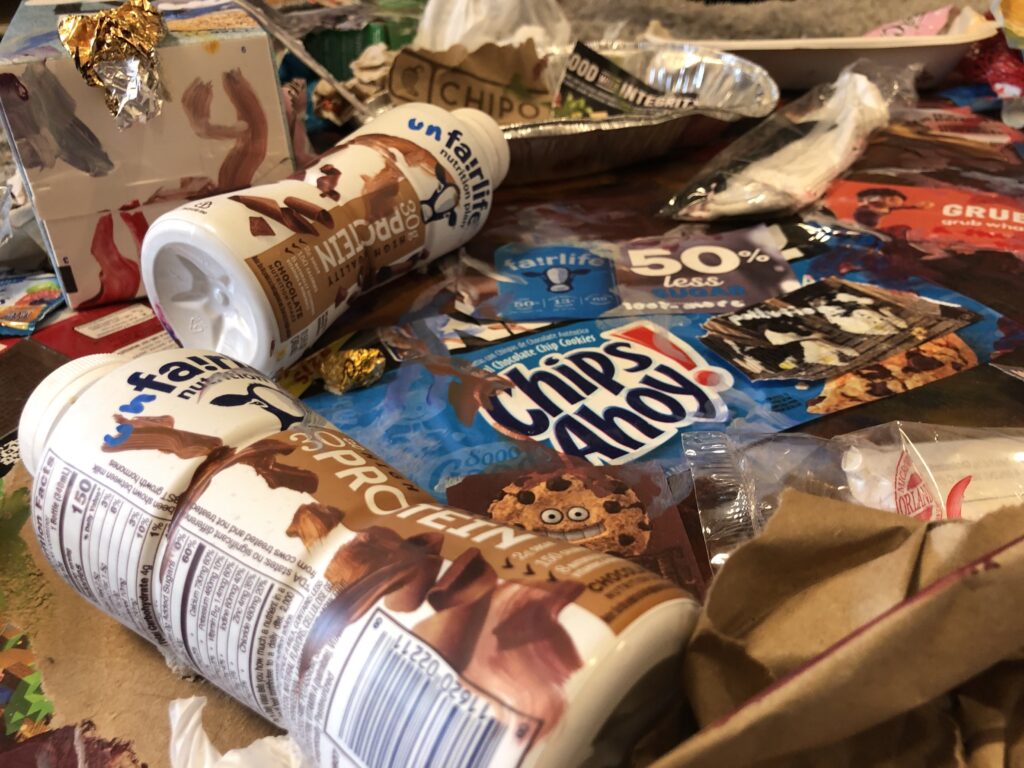
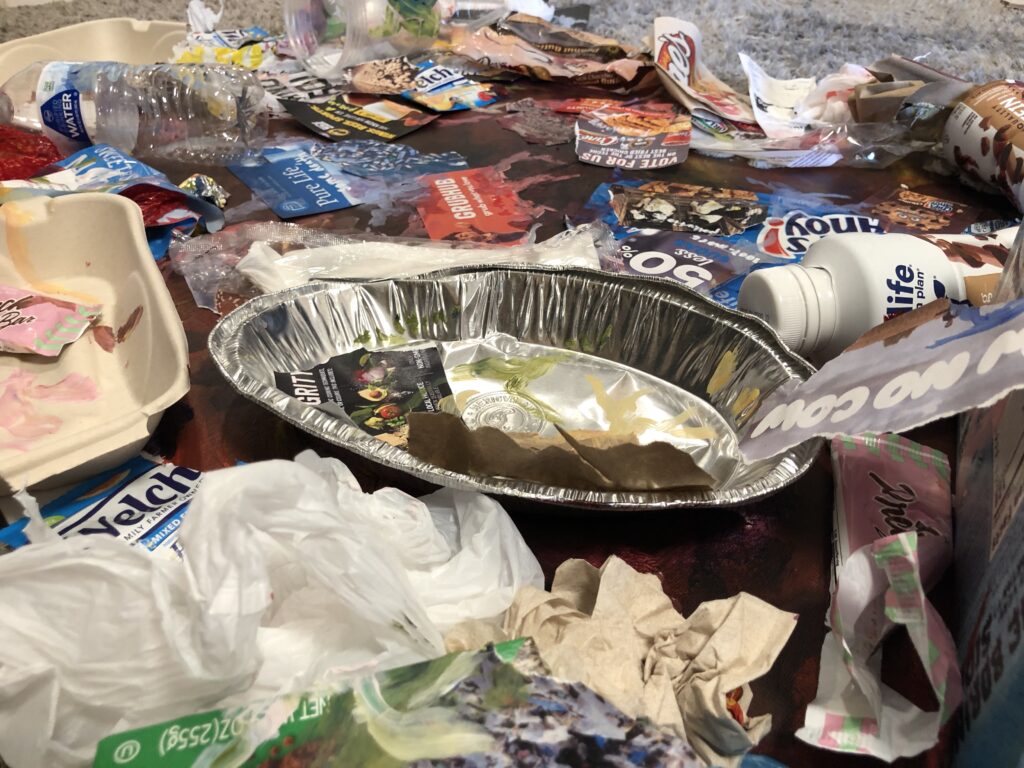
When I first did this piece, I was very interested in the way someone is convinced to change their habits. This came about because the research statistics about food waste brought light to the problems of waste in the US but were also not surprising to me or probably many others. However, knowing about food waste doesn’t seem to change people’s mind. I felt as though this project was much more compelling than statistics and I still do–engagement and participation in something tends to make the knowledge of an idea much more real than simple reading about it. However, many months later as I update this writing, I reflect that I was not able to stick to a ‘slow food’ culture that I felt much more compelled to. While I have changed parts of my diet, I still l0ok to several weeks in school or at home when fast food and take out took up considerable amounts of my diet. I don’t know if that means this project was not as compelling as I originally thought, if I am simply lacking discipline on the matter, or if there are a lot of factors that go into this. I’d be willing to bet its the last one. I do not reflect on my food consumption regularly enough, I am still persuaded by food companies oftentimes subconsciously, and I fall out of touch with the connection of the earth to food and food to my body.
The topic of trash and what compels someone to change a habit are still two interests of mine that I am sure I will return to again both in my artwork and personal research.